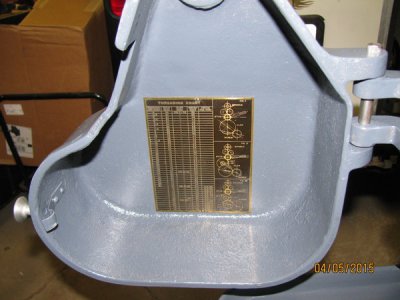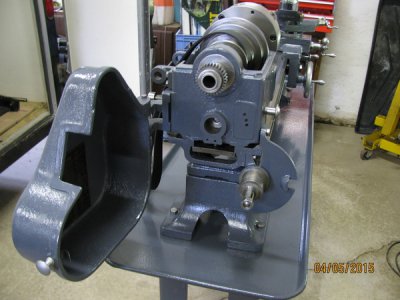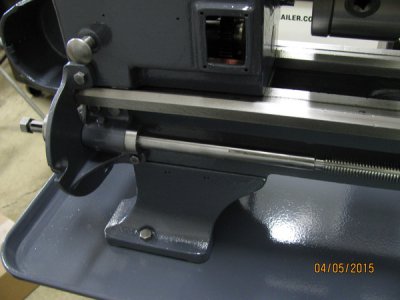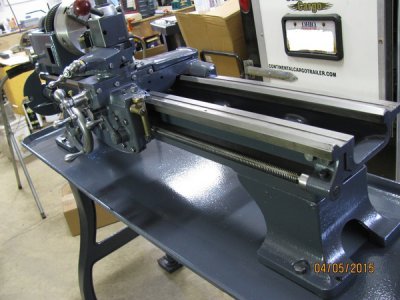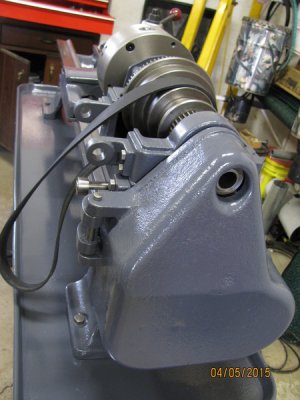- Joined
- Dec 14, 2013
- Messages
- 167
After cleaning, painting, and lubricating the apron parts, I assembled them in the reverse order of taking them apart.
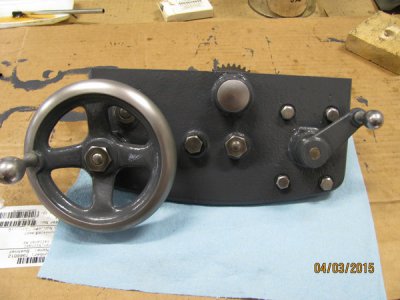
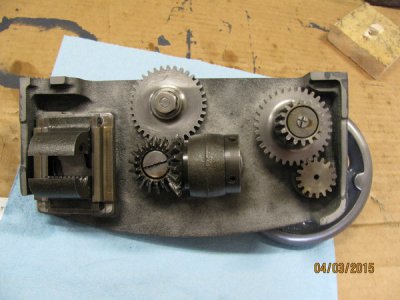
I assembled the apron to the carriage with the two allen head bolts.
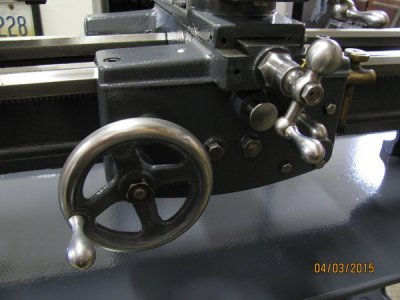
The threading dial was attached to the apron with the single mounting screw. It should be taken apart, cleaned, and oiled but I decided to oil it for now. It seems to hang up a little when you spin it by hand. Nothing terrible and I know it works. I'm not sure how it comes apart but it looks like the shaft may be peened over at the dial. I am concerned that I would screw it up if I try to take it apart.
That's it for now.


I assembled the apron to the carriage with the two allen head bolts.

The threading dial was attached to the apron with the single mounting screw. It should be taken apart, cleaned, and oiled but I decided to oil it for now. It seems to hang up a little when you spin it by hand. Nothing terrible and I know it works. I'm not sure how it comes apart but it looks like the shaft may be peened over at the dial. I am concerned that I would screw it up if I try to take it apart.
That's it for now.


